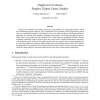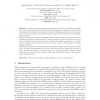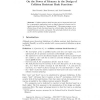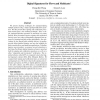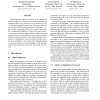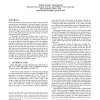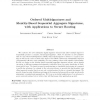104
Voted
IACR
2011
13 years 12 months ago
2011
We give new methods for generating and using “strong trapdoors” in cryptographic lattices, which are simultaneously simple, efficient, easy to implement (even in parallel), a...
113
click to vote
IACR
2011
13 years 12 months ago
2011
: Many identity-based digital signature schemes using bilinear pairings have been proposed. But the relative computation cost of the pairing is approximately twenty times higher th...
135
Voted
CRYPTO
2011
Springer
14 years 2 days ago
2011
Springer
Structure-preserving signatures are signatures defined over bilinear groups that rely on generic group operations. In particular, the messages and signatures consist of group elem...
140
Voted
ASIACRYPT
2011
Springer
14 years 8 days ago
2011
Springer
We provide constructions of (m, 1)-programmable hash functions (PHFs) for m ≥ 2. Mimicking certain programmability properties of random oracles, PHFs can, e.g., be plugged into ...
122
Voted
ASIACRYPT
1992
Springer
15 years 4 months ago
1992
Springer
Collision resistant hash functions are an important basic tool for cryptographic applications such as digital signature schemes and integrity protection based on "fingerprinti...
101
click to vote
ICNP
1998
IEEE
15 years 4 months ago
1998
IEEE
We present chaining techniques for signing/verifying multiple packets using a single signing/verification operation. We then present flow signing and verification procedures based...
101
click to vote
ASIACRYPT
2000
Springer
15 years 4 months ago
2000
Springer
A potentially serious problem with current digital signature schemes is that their underlying hard problems from number theory may be solved by an innovative technique or a new gen...
89
Voted
ACSAC
2000
IEEE
15 years 4 months ago
2000
IEEE
Digital signature schemes are based on the assumption that the signing key is kept in secret. Ensuring that this assumption holds is one of the most crucial problems for all curre...
102
Voted
EDBT
2010
ACM
15 years 5 months ago
2010
ACM
Secure data sharing in multi-party environments requires that both authenticity and confidentiality of the data be assured. Digital signature schemes are commonly employed for au...
102
click to vote
CCS
2007
ACM
15 years 6 months ago
2007
ACM
We construct two new multiparty digital signature schemes that allow multiple signers to sequentially produce a compact, fixed-length signature. First, we introduce a new primiti...
